Vegetables that start with T are a delightful food journey through a collection of culinary veggies that belong to different types, including root, legume, and stem vegetables. You will learn about their origins, names, looks, varieties, textures, flavors, and culinary uses.
Each “T” vegetable is described in detail in its own section, giving you an insight into foods starting with T . However, first and foremost, let’s go through all the “T” vegetables and their main characteristics.
Later on, let me introduce you to fruity picks that also start with T.
19 Popular Vegetables That Start with T with Filters
Learn more about the T-starting vegetables with the help of the filter system to view how these options are categorized for dishes, beverages, or garnish. Plus, check out the fruit vegetables, and some exotic vegetable picks too.
Tarwi
- For Dishes
Tarwi is a bean with various regional names, such as chocho in Ecuador and lupini in Europe. These legumes are from the Andean region of South America, highly valued for their protein content.
Tarwi are typically small, round seeds similar in size and shape to chickpeas. The seeds have a tough outer shell, usually soaked or boiled for adding to soups and stews.
Some common varieties are larger and cream-colored tarwi, and smaller ones come in darker hues. Tarwi seeds have a firm and slightly crunchy texture with a nutty and earthy flavor along with a mild bitterness.
Taro
- For Dishes
Taro, originating in Southeast Asia and the Indian subcontinent, is known by various names such as dasheen, eddo, cocoyam, and elephant ear. This root vegetable features a distinctive appearance with a bulbous, starchy root covered in rough, brownish skin.
The flesh inside can range from white to pale lavender or pink, depending on the variety. Taro has a starchy, dense texture when cooked, similar to potatoes, but slightly slimy when overcooked.
Its flavor is earthy, nutty, and mildly sweet, with a hint of chestnut-like richness. Interestingly, taro leaves are also edible in dishes like laing (taro leaves and meat or seafood) in the Philippines and are also used to wrap and steam fillings.
Tomato
- For Beverages
- For Dishes
- Fruit Vegetables
Tomato, also seen as a vegetable, is a fruit native to the region of modern-day South America. These plum fruits come in various sizes and colors worldwide with a round or oval shape along with smooth, shiny skin.
Their color can vary widely, ranging from vibrant red, yellow, and orange to green and even purple for some heirloom varieties. In the cuisine world, tomatoes are great when enjoyed raw in a salad or cooked into a sauce.
Turmeric
- For Beverages
- For Dishes
Turmeric is an aromatic rhizome in Southeast Asia and the Indian subcontinent. Also known as curcumin, turmeric falls under the root vegetable category and is commonly available in fresh rhizomes and dried ground powder.
Fresh turmeric has knobby, finger-like rhizomes covered in thin, brownish skin, revealing vibrant orange-yellow flesh. When dried and ground, it takes on a bright golden-yellow hue, perfect for dying dishes with the same color.
Fresh turmeric has a firm, slightly fibrous texture when sliced or grated, offering an earthy, peppery flavor with subtle bitterness. In its dried, ground form, turmeric has a more concentrated flavor that can turn slightly bitter if overused.
Turnip
- For Dishes
Turnip is a root vegetable native to Europe and was first recorded around 2000 BC. They are renowned for their typically spherical or cylindrical shape, with skin colors varying from white to creamy yellow, sometimes featuring colorful tops.
Regarding texture, young turnips offer tenderness and crispness for raw consumption, while mature ones become starchy and are often cooked. The flavor profile of turnips is earthy, mildly sweet, and slightly peppery, which becomes sweeter when roasted or cooked.
Tigernut
- For Beverages
- For Dishes
Tigernut, also known as earth almond, chufa, and yellow nutsedge, are root vegetables from Africa, typically available in two forms: whole tigernuts and tigernut flour.
Tigernut is small, brownish tubers, roughly chickpea-sized, featuring wrinkled and textured outer skins and revealing a pale, creamy interior when peeled. Each plant can yield several thousand tubers in one growing season.
Tigernuts offer a unique texture that’s both crunchy and chewy, reminiscent of nuts or seeds, with a sweet and nutty flavor, sometimes carrying a hint of coconut. Ground into flour, it offers a slightly sweet and mild taste.
Tepary Bean
- For Dishes
Tepary beans are a legume native to America, often grown in desert and semi-desert regions. Also known as pavi, pawi, escomite, etc., tepary beans are typically smaller and rounder than common beans, with smooth, thin skins.
They come in various colors, including brown, white, and black. When cooked, tepary beans have a dense, meaty, and firm texture with a slightly nutty flavor, while also retaining their shape well, even after prolonged cooking.
Tepary beans frequently appear in salads across several international cuisines, as a popular choice in vegan and vegetarian dishes.
Tindora
- For Dishes
Tindora, known by various common names such as ivy gourd, scarlet gourd, and kowai fruit, is a tropical vegetable of tropical Asia. Resembling small, slender cucumbers with a length of about 1 to 2 inches, tindora has smooth, glossy skin and a cylindrical shape.
Additionally, the vegetable offers bitter tindora and non-bitter tindora with the non-bitter variety commonly found in India, while its bitter counterpart comes from Thailand. Tindora is crisp and crunchy when raw but tender when cooked, boasting a mild profile with a bitter aftertaste.
In Indian cuisine, tindora is used in various dishes, from vegetable curries to biryanis (Indian mixed rice). Additionally, tindora is used in Indian pickles, creating tangy and spicy condiments.
Topinambur
- For Dishes
Topinambur is a root vegetable originating in North America, usually known as Jerusalem artichoke, sunchoke, wild sunflower, and sun root.
Its tubers are knobby and irregularly shaped, with thin, rough skin that can be beige, reddish-brown, or pale yellow. The flesh beneath the skin is crisp and white, giving it a crunchy texture.
In terms of flavor, topinambur is sweet and nutty, with a hint of vanilla. In Italy, topinambur is used in salads, while Eastern European countries prefer pickling it to create tangy and crunchy pickles.
Turban Squash
- For Dishes
Turban squash is a winter squash cultivated in North America that comes in a round, flattened shape, with a bulbous lower portion and a flared top.
The skin is typically smooth with contrasting colors and patterns. On the side, the flesh of the turban squash is smooth, dense, firm, and slightly dry, offering a mild, sweet, and slightly nutty flavor.
When cooked, the flesh becomes tender, making the squash a viable choice in soups, stews, casseroles, or risottos. Plus, it is used in stir-fries, tempura (deep-fried battered vegetables), and various vegetable side dishes.
Tabasco Pepper
- For Dishes
- For Garnish
Tabasco pepper is a type of chili pepper from Mexico and belongs to the fruit category. Commonly known simply as Tabasco, Tabasco peppers are small and slim, typically measuring around 2 to 4 centimeters in length.
These peppers start as green peppers and ripen to a vibrant red hue, while also offering a crisp texture along with a fiery kick of bright, vinegary undertone. Alternatively, the green variety is milder, and less tangy than the red one.
In Mexican and Tex-Mex cuisine, tabasco peppers play a pivotal role in salsas, hot sauces, and chili recipes. They are also a key ingredient in spicy barbecue sauces and marinades across cuisines like Caribbean and Asian.
Trinidad Moruga Scorpion
- Exotic
- For Dishes
Trinidad moruga scorpion is a type of hot pepper thriving in Trinidad and Tobago of South America. Also referred to as the “Moruga Scorpion”, they are characterized by a small, wrinkled, and somewhat bumpy appearance.
With various colors of red, orange, and yellow, when fully ripe Trinidad moruga scorpion is mostly known for its intense heat and fruity flavor profile. The heat level of this pepper can reach up to 2,000,000 Scoville Heat Units (SHU), making it one of the hottest peppers in the world.
Due to its extreme spiciness, Trinidad moruga scorpion peppers are used sparingly in culinary applications around the world, especially in hot sauces, spicy salsas, and chili recipes.
Tahitian Spinach
- Exotic
- For Dishes
Tahitian spinach is a leafy green vegetable native to the South Pacific, particularly Tahiti and other Polynesian islands. Also called Tahitian taro leaves, the spinach possesses large, glossy, heart-shaped, vibrant green leaves.
The leaves have a tender, smooth texture, while the taste is mild, slightly nutty, and somewhat similar to traditional spinach. Tahitian spinach is used across Polynesian and Pacific Island cuisines, eaten cooked and raw.
In Southeast Asian countries like Indonesia, Malaysia, and the Philippines, Tahitian spinach contributes to soups, stir-fries, and side dishes. In African cuisine, Tahitian spinach is used in sauteed dishes.
Tatsoi
- For Dishes
Tatsoi is an Asian leafy green vegetable from China, known for its names like spoon mustard or rosette bok choy. Typically, tatsoi forms a compact rosette of dark green, spoon-shaped leaves, boasting a glossy and slightly serrated edge.
Thanks to a crisp, tender texture and a mild, slightly peppery flavor, tatsoi leaves are often used as a salad green, providing a fresh, crisp bite to salads. It can also be stir-fried, steamed, or added to soups and stews.
In Asian cuisines, particularly Korean, Chinese, and Japanese, tatsoi is a popular ingredient in hot pots, stir-fries, and noodle soups. In American and European cuisines, tatsoi is more commonly used for salads.
Three-Cornered Leek
- For Dishes
- For Garnish
Three-cornered leek is a perennial wild edible plant native to the Mediterranean region but is now found in various parts of the world. As a member of the onion family, it’s primarily valued for its edible leaves and flowers.
Commonly, three-cornered leek have slender, hollow, triangular stems, growing to a height of 30-40 cm. It produces delicate, star-shaped white flowers with green stripes and a mild onion-like fragrance.
The leaves of three-cornered leek are tender, with a texture similar to that of chives. They have a mild, sweet, and garlic-like flavor, making them a delightful addition to various dishes.
Thai Chili Pepper
- For Dishes
- For Garnish
Thai chili peppers are widely cultivated in various Southeast Asian cuisines. They belong to the fruit category and are an essential ingredient in many spicy dishes.
These peppers are typically small and slender, about 1 to 2 inches in length. They vary in color from green to red, depending on their maturity.
The green ones are usually milder, while the red ones are hotter. Known for their intense heat, they also have crisp, thin skin and a fiery, sharp flavor that can quickly add a spicy kick to any dish.
Thai Eggplant
- For Dishes
- Fruit Vegetables
Thai eggplant is a fruit vegetable originating from Southeast Asia, featuring a small and round shape, roughly the size of a golf ball. They come in various colors, including green, purple, and white.
Usually, Thai eggplants provide a crisp and slightly firm texture when cooked with a mild and slightly bitter flavor.
These crunchy fruits are a staple in Thai cuisine, where they are used in a variety of dishes, like Thai curries, green, and red curry, to absorb the flavors. They can be prepared in many ways, including grilling, roasting, and steaming.
Tuscan Kale
- For Dishes
Tuscan kale is a leafy green vegetable coming from Italy, particularly the Tuscan region. With other names of lacinato kale or dinosaur kale, Tuscan kale is easily recognized by its long, dark green, wrinkled leaves that grow in a tall and narrow shape.
This kale variety has a robust and slightly chewy texture compared to other greens like spinach or lettuce. The leaves are tender when cooked but maintain a firmness that adds a pleasant bite to dishes.
Besides, the flavor of Tuscan kale is earthy, slightly nutty, and less bitter than some other kale varieties, making it more palatable for many.
Tarragon
Tarragon is a leafy green herb known for its distinctive, slightly sweet anise-like flavor. It’s often used in French cuisine, especially in sauces, chicken, fish, and egg dishes.
The leaves are long, narrow, and glossy, and can be used fresh or dried. Tarragon also offers a hint of licorice profile to many culinary creations.
What Are the Fruits That Start with T?
Interestingly, some fruits even have their names beginning with T. Here are a few choices you need to know:
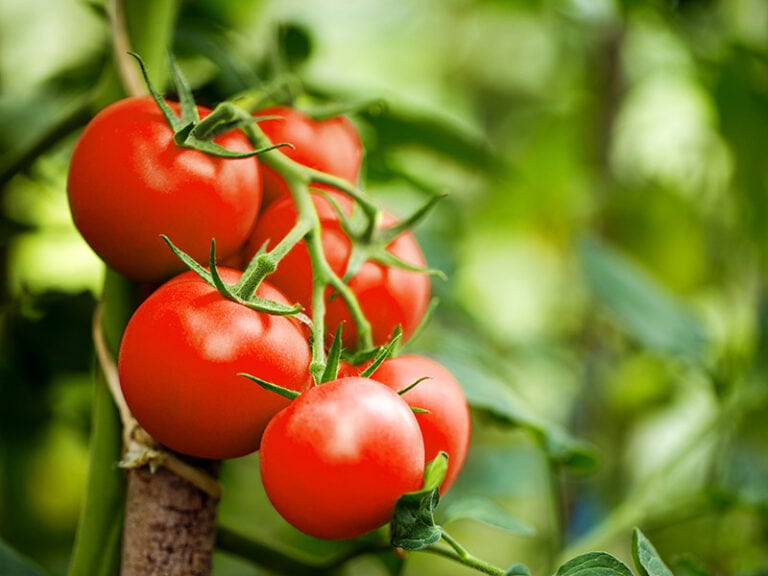
Tomato
Tomatoes are versatile fruits often used as a vegetable. They are known for their red color and juicy, slightly acidic flavor, and they are essential in many cuisines.
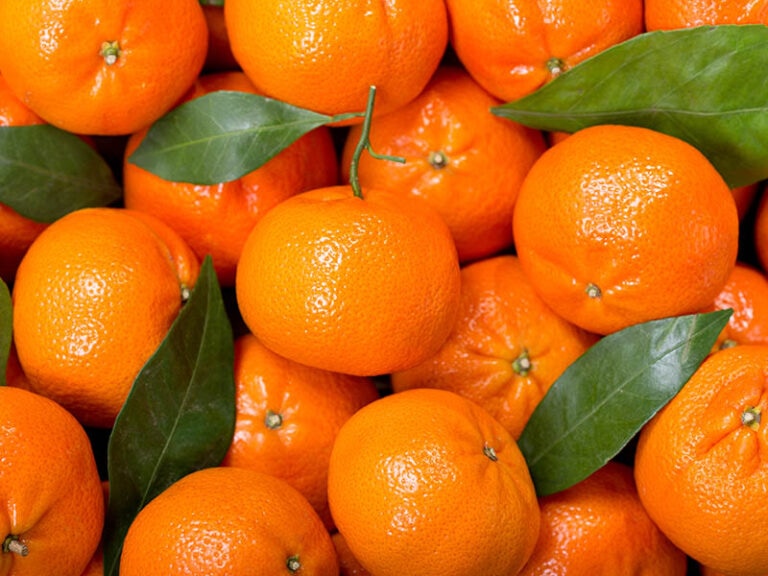
Tangerine
Tangerine is a small citrus fruit with a deep orange skin. The fruit is sweeter, less sour than oranges, and easy to peel segment.
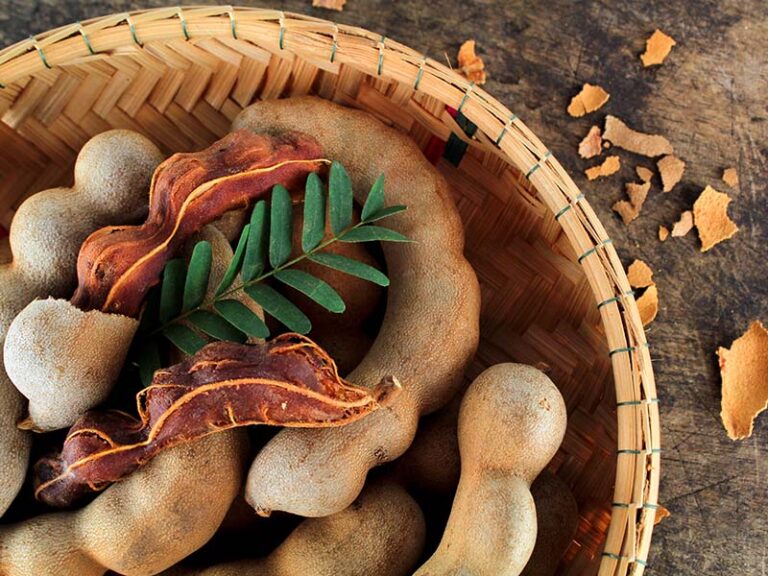
Tamarind
Tamarind is a tropical fruit with a hard, brown shell. Its pulp is tart and sweet, making tamarind a favorite for adding in sauces and drinks.

Tangelo
Tangelo is a citrus hybrid, combining tangerine and grapefruit or pomelo, known for its juicy, sweet-tart flavor and easy-to-peel skin.
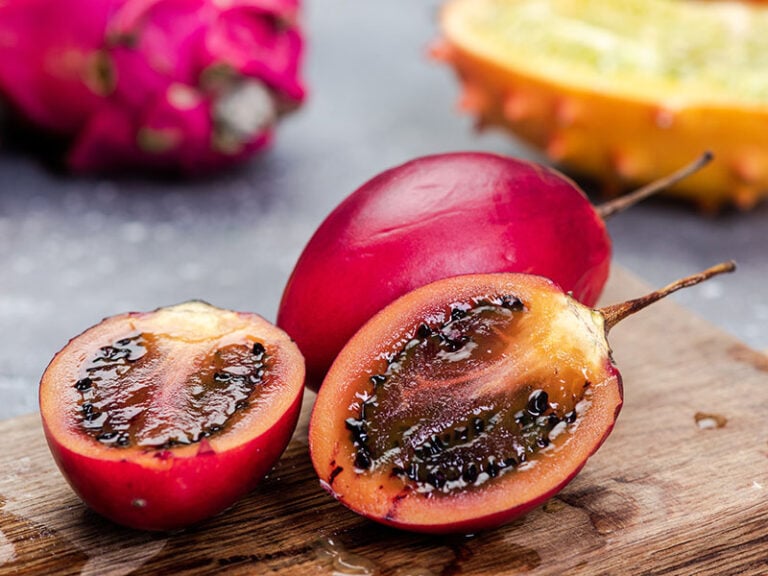
Tamarillo
Tamarillo, also known as the tree tomato, offers a unique sweet-sour flavor, eaten fresh or used in cooking, with a distinctive reddish-purple skin.
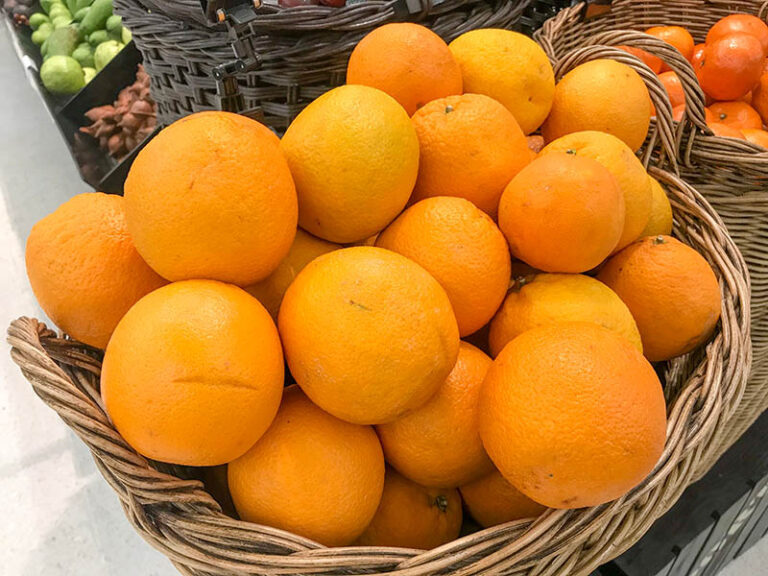
Tangor
Tangor is a citrus fruit hybrid between tangerine and orange, featuring a sweet flavor and juicy flesh, perfect for fresh eating or juice.
Are these fascinating fruits beginning with T spark your curiosity? Make sure to check them out for more fruity options.
Note that these are only a few examples, as there are more choices for you to uncover to satisfy your curiosity, from A to Z. Please share and leave a comment about your thoughts about these vegetables.

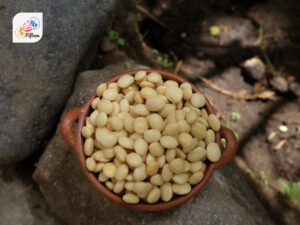

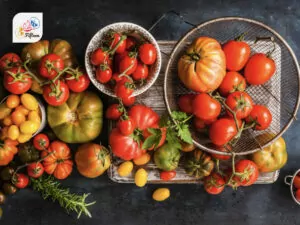
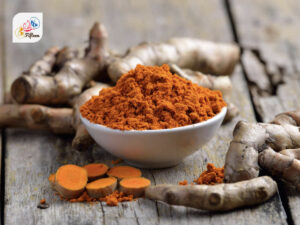
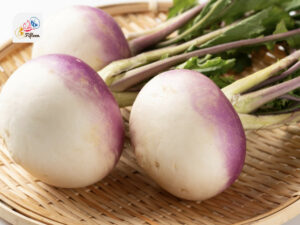
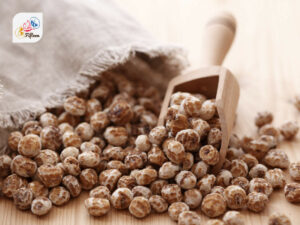
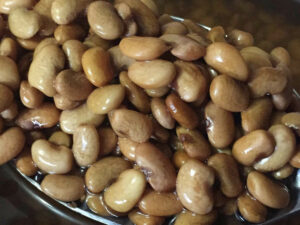
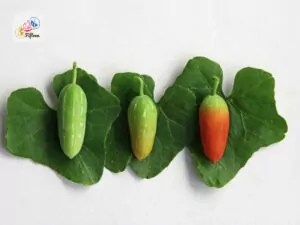
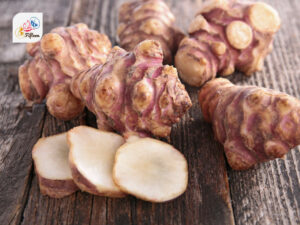
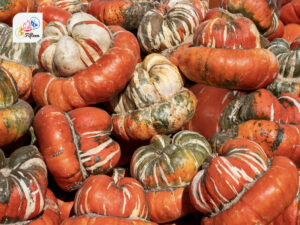
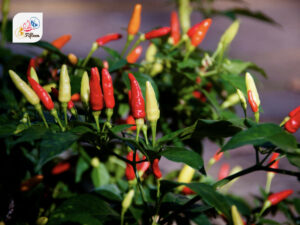
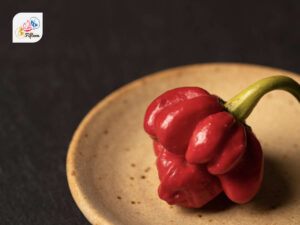
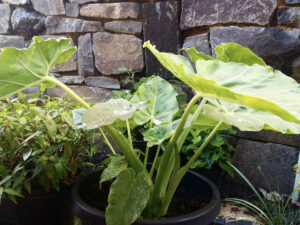
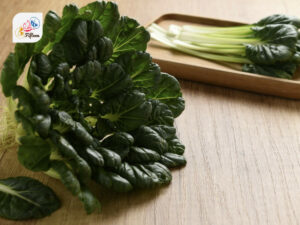
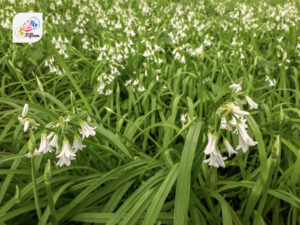
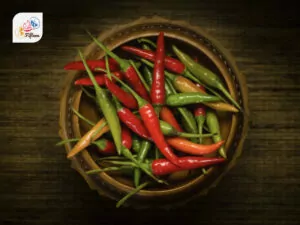
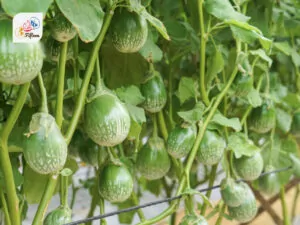
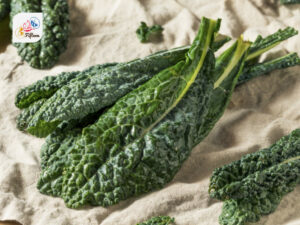
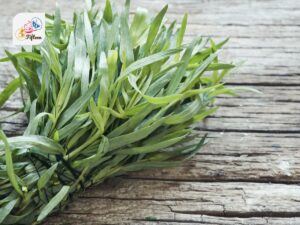
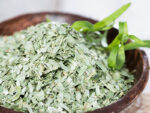
Jamie Scott
Editor in Chief, Senior Content Writer
Expertise
Home Cooking, Meal Planning, Recipe Development, Baking and Pastry, Food Editor, Cooking-video Maker, Western Food Evaluation Expert
Education
Le Cordon Bleu College of Culinary Arts
Local Community College, New York, NY
Jamie Scott is a skilled culinary expert and content creator specializing in Western cuisine. With over 15 years in the culinary field and formal training from Le Cordon Bleu, Paris, Jamie deeply understands how to blend nutrition with delicious flavors. His passion for cooking matches his commitment to making healthy eating accessible and enjoyable.
On Fifteen.net, Jamie brings a fresh perspective to classic dishes and beverages, offering readers insightful recipes, cooking tips, and a fresh view on meal planning that emphasizes taste, health, and simplicity.